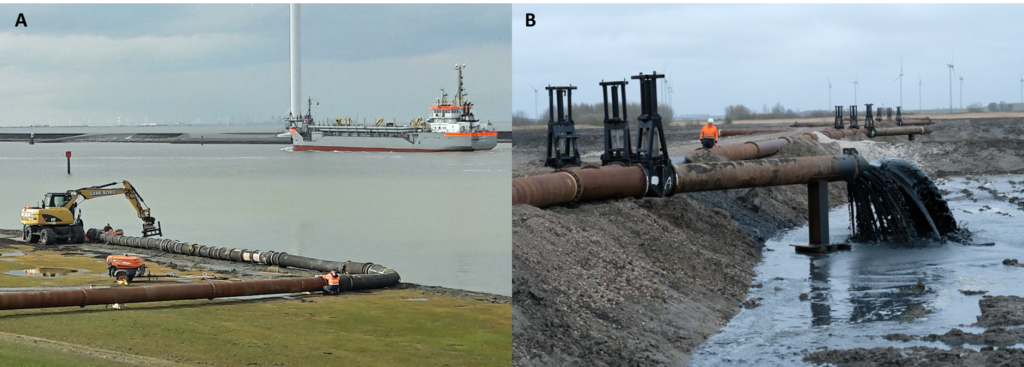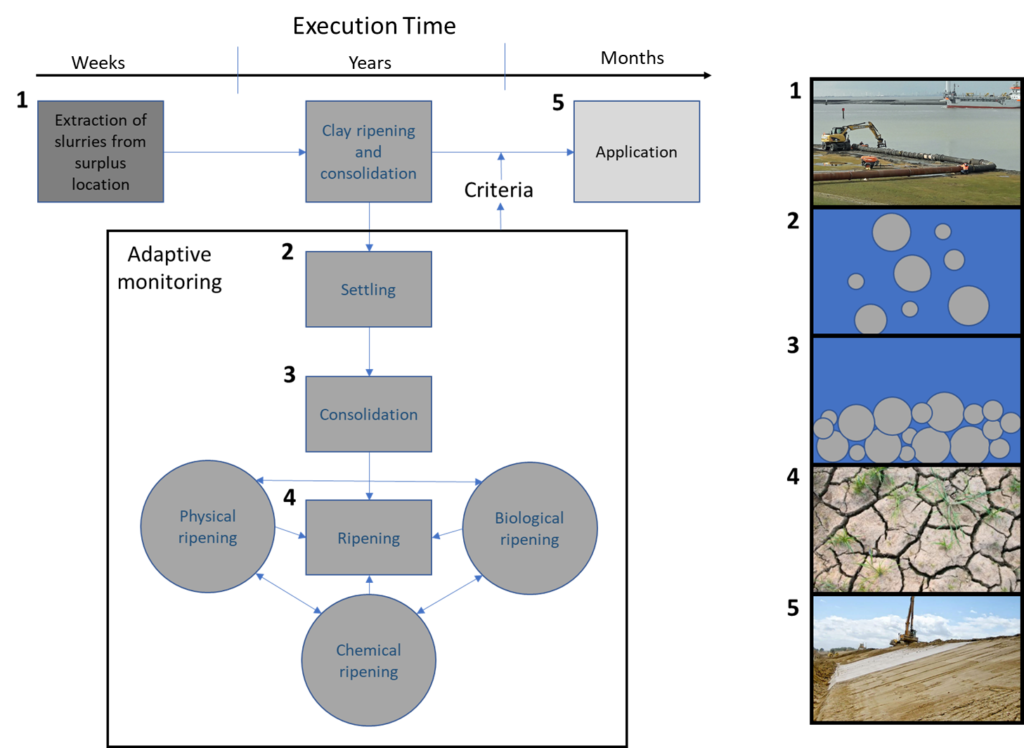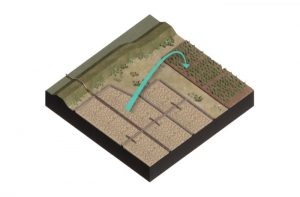Overview
This concept covers the beneficial use of dredged fine sediment, which is converted into construction material.
Excess mud in estuaries and water ways brings serious challenges in terms of the water quality and navigation. The water quality is affected because light cannot penetrate waters with high suspended sediment concentrations. This reduces photosynthesis within macroalgae in deeper water and consequently a drop in dissolved oxygen and therefore the vitality of aquatic life. Regarding navigation, the nautically required depth in ports and water ways as well as water quality objectives in estuaries drive maintenance dredging activities. Annually in Europe alone, more than 100 million m3 of sediment is dredged (OSPAR, 2016; Palumbo, 2007). Traditionally, dredged sediments are disposed at designated locations or stored upland at disposal sites.

Yet, in the light of climate change induced mean sea level rise combined with anthropogenic and natural land subsidence, there is a need for sediment for construction purposes. Sand has more suitable characteristics for construction purposes, but a lack of sand and a surplus of soft/fine sediment, drives research for the applicability of soft/fine sediment as a resource for construction material. This includes heightening and strengthening dikes, enforcing embankments, land-fills for reclamation projects, building island, land uplifting in subsided regions and even agricultural land. A consolidation and ripening project encompass an upland area (order size: hectares) with drainage pipes on the bottom (but not necessarily to keep costs low), gates to regulate dewatering and initially fed with slurries by pipes. These pipes extract the material at the extraction point (Figure 1).
The art of clay ripening and consolidation as a Building with Nature concept lies within the connection between the need to dredge and the need for sediment as a building material (Figure 2). Namely, the dredged (waste) material can be used as a building material: beneficial use of ‘gebiedseigen material’ (native material for local application) paving the path toward a circular economy. In other words, material is not disposed back into the system and transported over long distances which reduces carbon emissions and saves costs.


